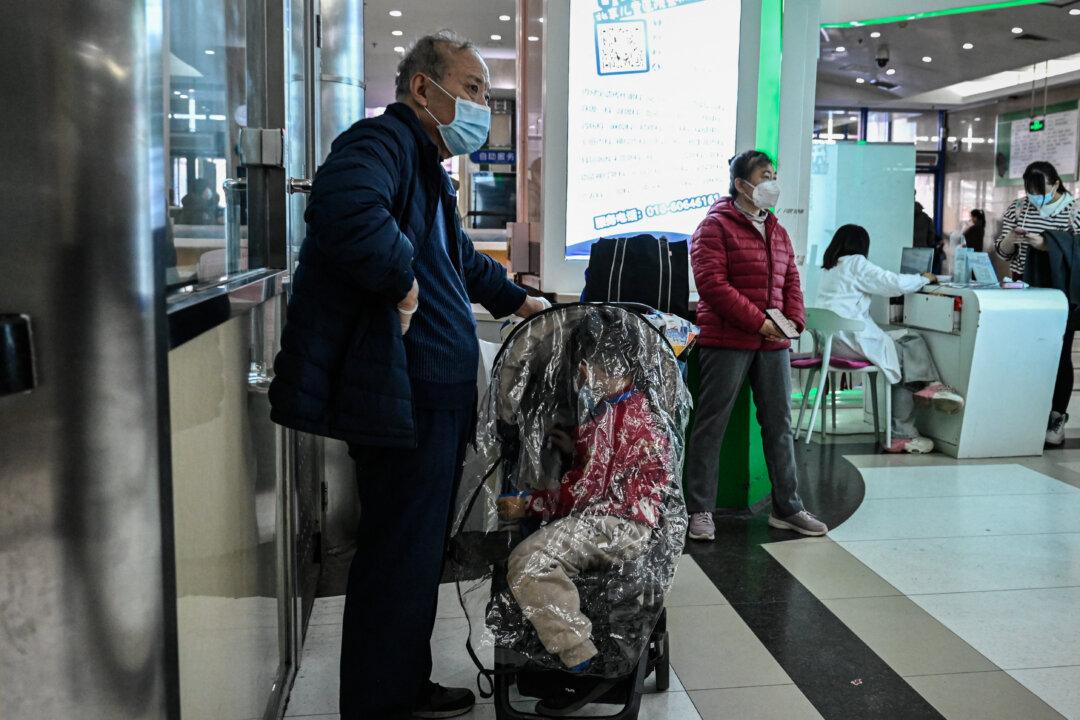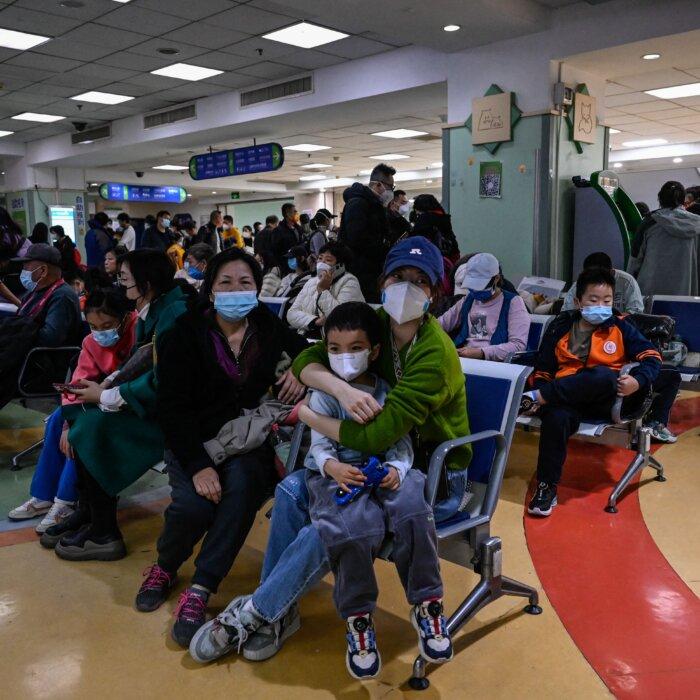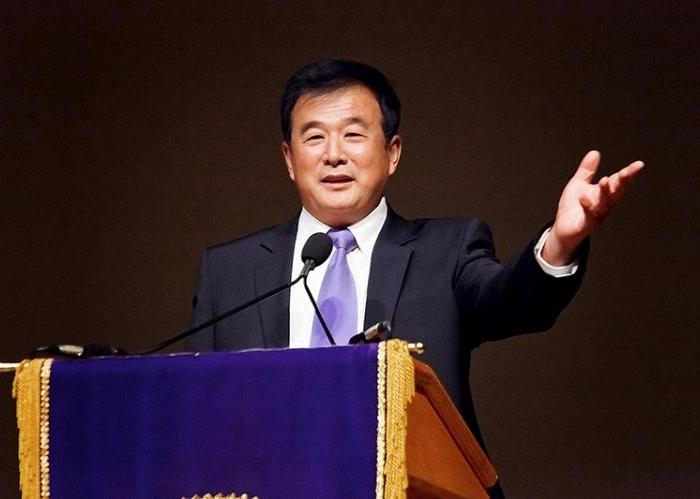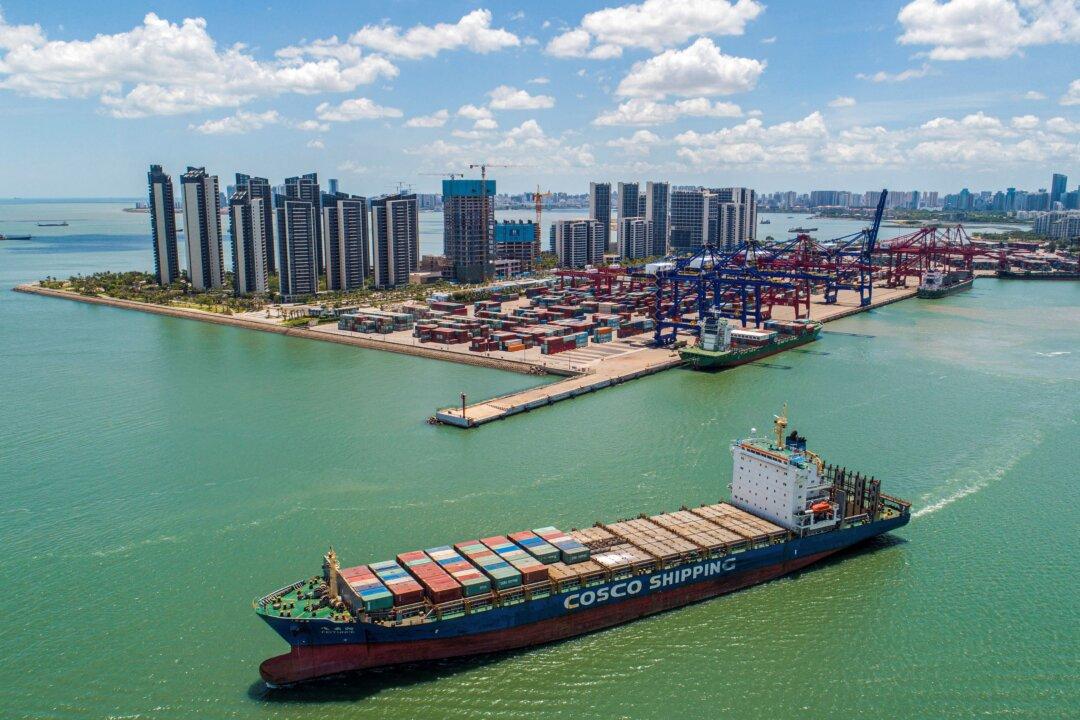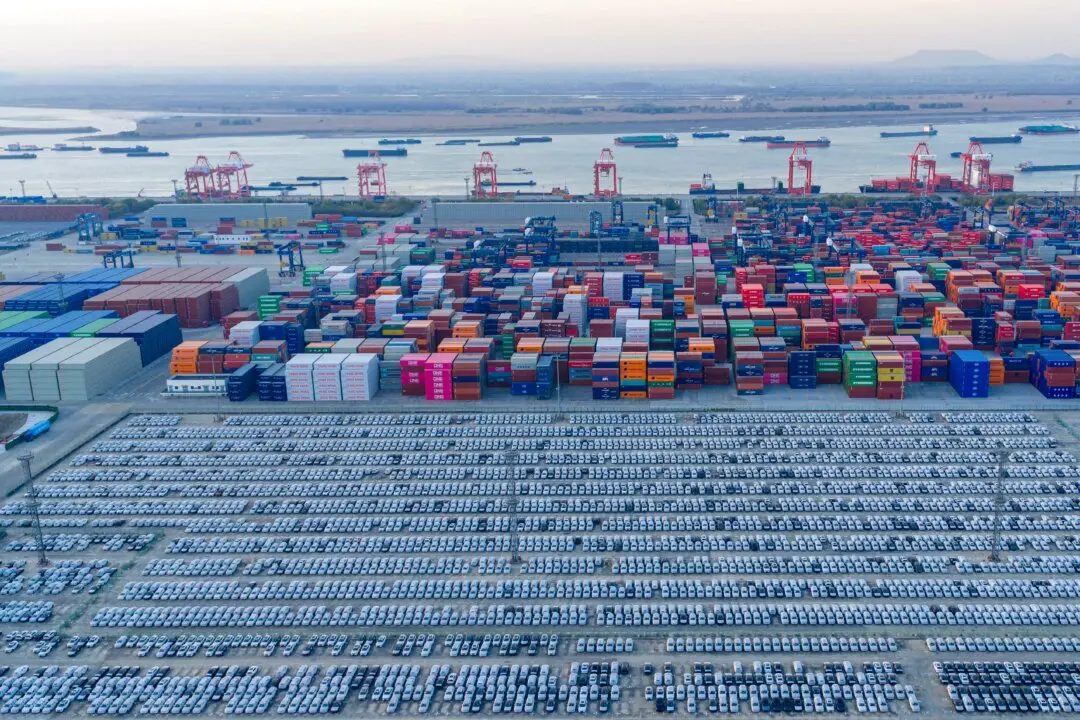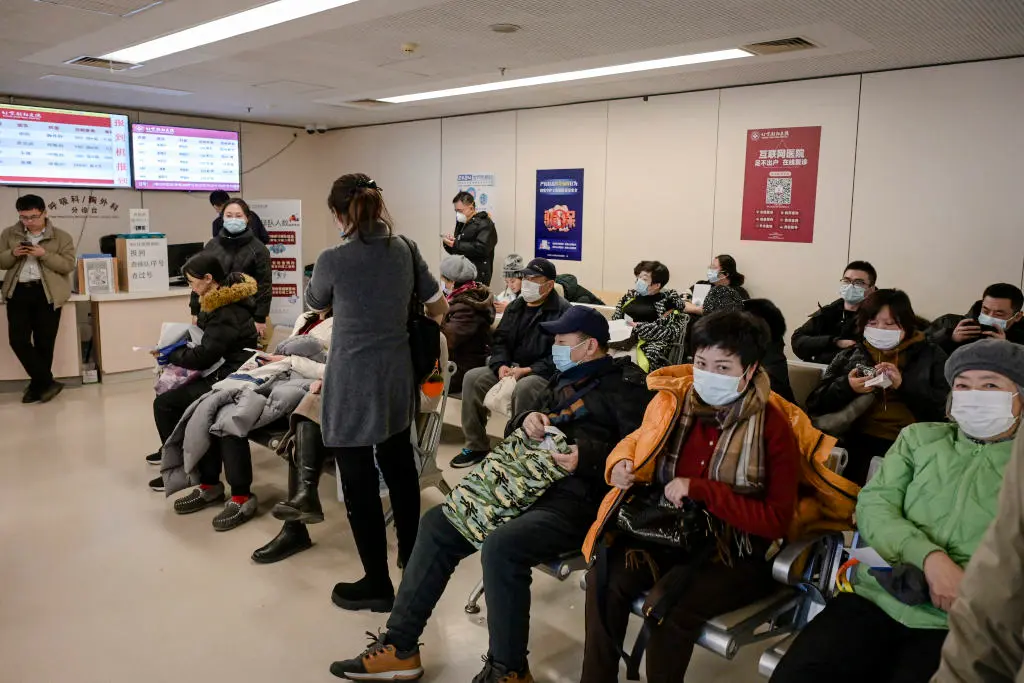While many Chinese people are reporting feeling ill and seeking medical assistance for respiratory problems—enough to spur the World Health Organization (WHO) to seek data from China’s ruling Chinese Communist Party (CCP)—the CCP is set on controlling the COVID-19 narrative coming out of China to the outside world, according to a whistleblower.
The whistleblower, an insider with knowledge of discussions in the top echelons of the CCP in Zhongnanhai, the party’s leadership compound, has exclusively revealed to The Epoch Times that CCP leader Xi Jinping has ordered officials to downplay reporting on China’s current outbreak of respiratory illness and to avoid the term “COVID-19.”
Yang Qing, who’s using a pseudonym out of safety concerns, is based in Beijing and has ties to the General Office of the CCP’s Central Committee and the military. The whistleblower told the Chinese-language edition of The Epoch Times on Nov. 26 that authorities have been ordered by Xi to refer to the outbreak of serious respiratory disease as “mycoplasma pneumonia infections,” which are prevalent in children, or other infections that aren’t COVID-19, such as “influenza.”
The CCP’s experts have also been ordered to emphasize to the public the talking points of the party line, which stipulates that the current wave of infections is caused by various known viruses and not by a COVID-19 mutation of the SARS-CoV-2 virus, Mr. Yang said.
China’s domestic media have also been told that they aren’t allowed to focus on the epidemic, according to the whistleblower.
“Of course, the media can issue some disease prevention common sense on how to prevent influenza, but it can only be aimed at child infections—they can’t mention adult infections as they need to pay attention to ‘rhetoric,’” Mr. Yang said.
The CCP authorities will also move to prevent foreign media from interviewing and reporting on the outbreak, Mr. Yang said of Xi and the party’s directives.
Mr. Yang explained that the CCP leadership is particularly nervous about this wave of infections because it coincides with the first anniversary of the White Paper Movement, sparked on Nov. 24, 2022, by a deadly fire in a residential community in Urumqi, Xinjiang, that killed at least 10 people and injured many more who became trapped inside because of the CCP’s draconian COVID-19 lockdown policy.
In the days following the fire, mass protests broke out, with international attention captured by the Urumqi Middle Road protest in Shanghai, where Chinese people shouted the slogans “Down with the Communist Party” and “Xi Jinping step down!” A short time later, the CCP announced that it was ending its strict zero-COVID policy.
Mr. Yang said the directive could be to ensure public relations success for Xi’s recent visit to San Francisco for the China–U.S. summit.
COVID-19
The CCP’s National Health Commission said in a news briefing on Nov. 26 that, according to its monitoring, the recent wave of respiratory infections have been mainly caused by influenza and also, to some extent, rhinovirus, mycoplasma bacteria infections, the respiratory syncytial virus, adenovirus, and so forth. It made no mention of SARS-CoV-2, which causes COVID-19 and is still circulating in China and around the world.However, SARS-CoV-2 was listed in the CCP health departments’ previous announcement. The CCP’s Joint Prevention and Control Mechanism and State Council also issued a notice on Nov. 24 that listed “novel coronavirus infection” in the title of a notice about the epidemic of multiple respiratory diseases.
“Recently, China opened visa-free entry to several countries,” Mr. Yang said. “Now, there is an epidemic in the country. It must be called ‘ordinary influenza’ or something like that. If it’s said to be a large-scale outbreak of COVID-19, people from other countries would not come to China.”
As the outbreak quickly worsened, on Nov. 24, the CCP’s Ministry of Foreign Affairs suddenly announced that it'll offer unilateral visa-free entry for France, Germany, Italy, the Netherlands, Spain, and Malaysia starting on Dec. 1.
When COVID-19, which was first called “Wuhan pneumonia” in China because of its origin and symptoms, first broke out in late 2019, the CCP concealed the truth of how the virus could be transmitted by humans. It shut down domestic travel in and out of Wuhan in January 2020 because of the epidemic, but the regime continued to allow people to leave China, speeding up the spread of COVID-19, which quickly became a global pandemic.
Attracting International Attention
Since mid-October, many children in China have been developing pneumonia, suffering from fevers, and even exhibiting white lung symptoms as seen previously from serious COVID-19 infections in various regions in China. The cases skyrocketed further in November, infecting adults and overwhelming Chinese hospitals.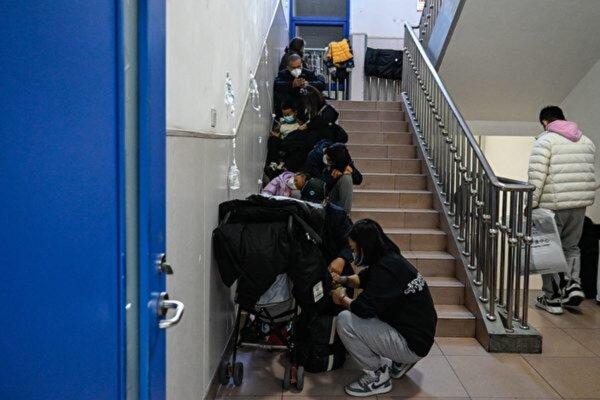
CCP officials responded to the request by saying that no “unusual or new pathogens” have been found and that the outbreak is caused by multiple known pathogens while denying that cases had exceeded China’s overall hospital capacity.
However, many Chinese and others in the international community haven’t been convinced by the assurances from China, given the CCP’s legacy of coverups, including the start of the COVID-19 outbreak and the SARS-CoV-1 outbreak of 2002.
International media outlets have described the new wave of mysterious pneumonia and the CCP’s forced response as “deja vu.”
Despite China’s denials of any new risks, neighboring countries such as India, Vietnam, and Taiwan are concerned and are preparing for a potential spillover if there are new variants.
The Chinese population is only now facing its “first autumn-winter season” without lockdowns, she said.
Patient System Collapses, Makeshift Hospital Reopened
In addition to the many children infected across the country—with more and more of them needing lung lavage or lung-washing treatment—parents, teachers, and medical staff are also reportedly infected.A large number of posts on Chinese social media reported 4,000 to 5,000 people crowded in the confined space of the night clinic at the Department of Internal Medicine of Beijing Children’s Hospital. By the early morning, more than 2,000 children were still awaiting treatment. Parents expressed worry about cross-infection among the children.
It was also reported on social media that on the afternoon of Nov. 26, the system that records the patient waiting list for the Beijing Children’s Hospital collapsed, potentially because of its handling of an overwhelming number of patients for many weeks.
Tianjin Children’s Hospital treated more than 13,000 children on Nov. 18 in outpatient and emergency care—a record high.
On Nov. 23, the children’s hospital affiliated with the Capital Institute of Pediatrics began to increase its number of comprehensive internal medicine services in addition to outpatient and emergency services to relieve pressure on its emergency department.
While many patients needing care at the hospitals are children, a large number of medical staff have also been reported to be infected. Because of severe manpower shortages, some hospitals have reported that their orthopedic, obstetric, and gynecology doctors have been transferred to the pediatrics department to help treat sick children.
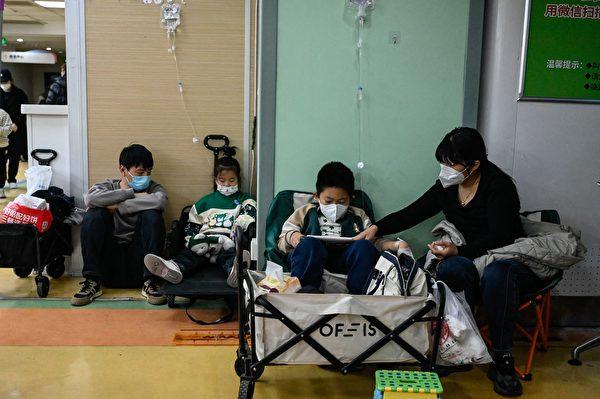
Chinese officials said they’ve required medical institutions to extend their service hours to maximize their treatment capacity. However, pediatric hospitals everywhere, including in Beijing and Shanghai, have already exceeded capacity.
Beijing University Women’s and Children’s Hospital has reopened its makeshift hospital, built early in the COVID-19 outbreak, and is using it for IV treatments.
Wang Huaqing, chief expert of the immunization program at the Chinese Center for Disease Control and Prevention, told Chinese media that different pathogens are currently prevalent in different age groups, ranging from ages 1 to 60, in mainland China. China’s National Health Commission has stated that the surge in cases is because of the superposition of multiple respiratory pathogens.
Medical experts in Beijing say the epidemic is being spread through droplets and close contact, as well as by contaminated hands and surfaces, and that both children and adults are likely to be infected. They admitted that there’s no particularly effective drug to treat the disease.
